The provisions of the CPC do not define the exact concept of “material evidence”. The law uses an enumeration of their specific types. In this regard, it is generally problematic to explain what physical evidence is in the criminal process. 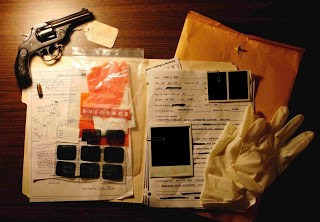
Classification
How can they still be classified? In accordance with the list in the law, there are the following types of evidence:
- Objects that served as an instrument of crime and have traces of it on themselves.
- Items in relation to which unlawful actions were directed.
- Values, cash and other property obtained as a result of criminal manipulations.
- Other documents and objects that may constitute a means to detect and establish the circumstances of the crime.
Along with this, in accordance with Art. 74 of the Code of Criminal Procedure, various evidence are material evidence. They may constitute grounds for a court, investigator, prosecutor, inquiry officer to be able to establish the absence or presence of circumstances of the proceedings in the manner prescribed by law.
Theoretical background
In accordance with the fact that in theory the concept of “material evidence” is associated with material objects, Kozlov formulated theses of a methodological nature. They reveal to some extent the essence of the term. In particular, Kozlov says that:
- Material evidence is the information that the subject of procedural knowledge receives. It is expressed by a natural code. In other words, it is a means of proof, acting in the process not as a thing or object, but as a message. This information allows the learner to gain knowledge about the circumstances that act as an object of study.
- Material evidence and its source reflect different objective realities.
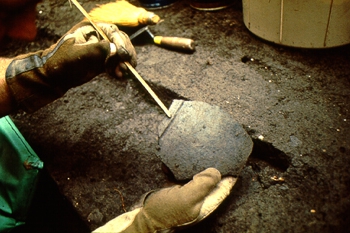
The properties
What will we talk about here? Physical evidence (objects, documents and other objects) have certain characteristics that are important for the investigation and establishment of the circumstances of a crime. These include, for example, physical properties (configuration and track size), location (stolen object discovered from the accused) or the fact of manufacture, creation or alteration (fake document). Thus, the evidence is not the subject itself, but its characteristics.
Design: general information
The form that material evidence has in the criminal process is manifested through the existence of all the properties that are relevant to the case. It should reflect the complex of these characteristics and be accessible to subjects of procedural activity. As a result of this, objects themselves or things that acted as direct objects of illegal actions cannot be a form of material evidence. They act only as an uncoded inanimate source of surviving traces of an offense. Their transformation into a procedural form, which is able to carry and express specific information relevant to the investigation, is carried out through fixing and description of the available evidence and characteristics in the manner prescribed by law.
Rules for registration
The Code of Criminal Procedure defines three main points that must be observed:
- The fact of receipt or discovery of an object by a court or investigator must be documented in accordance with the law.The seizure of material evidence, as a rule, occurs during some kind of investigative measure - a search, for example. This fact is recorded in the corresponding protocol. Also, material evidence in a criminal case may be transferred to the parties in accordance with Art. 86 of the CPC, and after that to the investigator or the court. An appropriate protocol is also drawn up about this, or a note is made in the minutes of the meeting. Also, material evidence is objects transferred to a court or investigator by state or other organizations (bodies) upon request. In this case, the fact of transfer is recorded in the corresponding official document - a cover letter.
- Inspection of material evidence is carried out in accordance with the provisions of Article. 81 Code of Criminal Procedure. It can be carried out during the investigative measure at which it was received. For example, when examining a crime scene. In this case, the results are recorded in the protocol of the investigation. Also, the inspection can be carried out in the process of a separate action directly related to the object of study. In this case, an independent protocol is drawn up.
- The object, acting as material evidence, is attached to the case. This rule is implemented through a special order of the investigator or court. Only after making this determination does the item go into the category of material evidence. The decision reflects the decision of the court or investigator on the relationship of a particular object to the proceedings and indicates its receipt at the exclusive disposal of these entities. The need for an accurate fixation of the fact of initiation is due to the fact that often such objects are of one or another spiritual or material value. It is also necessary to prevent their replacement or loss.
Procedure for storage of material evidence
The set of rules that are established in the legislation governs the implementation of the following tasks:
- Ensuring the preservation of the qualities and properties of evidence. In this regard, the necessary conditions must be created so that the objects do not lose their characteristics.
- Validation. In this case, we are talking about the availability of data that indicate compliance with the necessary storage conditions. This prevents all sorts of doubts about the integrity and characteristics of the connected objects.
- Providing conditions that exclude access to objects of unauthorized persons. This is necessary to prevent possible fraud by interested parties.
- Ensuring the property interest of the accused, the victim and other parties to the proceedings when things belonging to one of the participants act as evidence or the values, money or other property acquired in a criminal way are recognized. Quite often they go towards compensation for material damage.
According to the current legislation, the rules in accordance with which the storage of material evidence is carried out are determined by Art. 82 of the CPC, Government Decision No. 620 (dated August 20, 2002), Instruction No. 34/15 (dated October 18, 1989). Legislative acts are also the orders of departments and ministries conducting preliminary investigation, operational investigative and other activities, and interdepartmental orders. 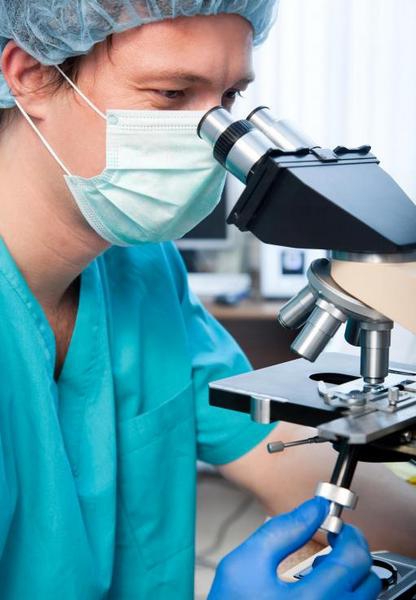
Requirements
Destruction of material evidence - narcotic, psychotropic drugs - is regulated by articles 28, 29 of the Federal Law of January 8, 1998, and a government decree of June 18, 1999. These documents establish appropriate rules for confiscated substances, equipment or instruments, the further use of which is considered inappropriate.In accordance with general requirements, material evidence must be contained in a package that ensures the impossibility of substitution, prevents the loss of its properties. The location of the object in special conditions is provided until the court verdict comes into force or before the expiration of the appeal period against the ruling or decision to terminate the proceedings. The object must be transferred along with the case. This rule applies to cases where the content is not accompanied by difficulties and does not constitute a danger to others.
Common objects
The following must be included in the criminal case:
- Military IDs, passports (birth certificates, registration certificates of minors) of arrested defendants, accused. These items should be stored in a sealed separate bag. It must be hemmed. The package is numbered with the next sheet of business. Other documents that are not relevant to the investigation shall be returned to the accused, suspect or their relatives (with the consent of the person under investigation).
- Letters, papers and other notes are stored in envelopes that are inserted between blank sheets. It is forbidden to make notes on them, to bend them. Envelopes are sealed, filed and numbered with the next sheet of the file. In the case of a large number of documents, they are placed in a separate package. He is also introduced to the case. The package or envelope must contain a certification inscription from the interrogating officer or investigator with a list of documents enclosed in it.
Other common evidence is stored in the police department in specially equipped rooms with a metal door, shelving, fire alarm, security and barred windows. In the absence of such a room, a safe or an iron cabinet of the required dimensions is allocated. An interrogator or investigator participating in the clerical work shall be appointed as the person responsible for the safety of evidence by the relevant order of the head of the police department.
Forensic examination of evidence
Objects to be studied are divided into 2 types:
- Contributing to the establishment of the causes of death, the mechanism of injury, identity, instruments of crime and more. For example, this category includes a bullet extracted from the body, an ax seized from a criminal, and others.
- Objects of biological origin. These include hair, sperm, blood and more. The study of material evidence in this case allows you to establish the ownership of their specific persons - the victim, the offender, and so on.
The purpose of the events is to determine the group, type, gender, other signs of objects of biological origin, using special knowledge in the field of forensic medicine. To study, the material evidence is transferred to the laboratory. 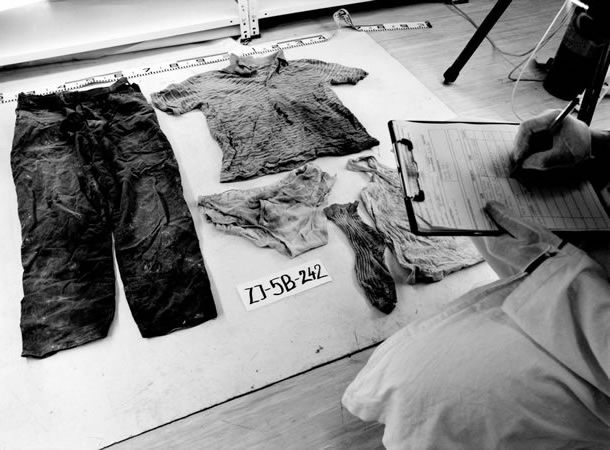
Grounds for directing objects to study
To perform a forensic examination are provided:
- The court ruling (the resolution of the investigating authority) on the need to study objects. The paper lists the circumstances and issues that should be resolved by specialists. Along with this, objects for study are sent.
- List of materials sent as samples. For example, it can be fragments of blood, hair, and more.
- Copy of protocol of inspection of objects or crime scene and seizure of samples.
- Conclusion of the initial study (with its repeated conduct).
In the absence of any materials, the expert needs to request them. This mainly concerns samples for comparative analysis. Without them, an examination cannot be carried out. The date of the beginning of the study of objects is the day of receipt of the last of the requested samples (materials). Material evidence and supporting documents are handed over to the forensic specialist by the head of the biological department.
Object study steps
First of all, the executor needs to investigate the circumstances of the crime and questions posed to him. The specialist also clarifies which materials were sent for study, which traces were discovered, etc. Next, he needs to inspect the parcel for its integrity. This is done in the presence of witnesses. In the event of damage on the packaging, a corresponding act is drawn up and reported to the investigating authorities. Next, the package is opened. An expert compares the availability of materials with a list in a determination or regulation. In the absence of discrepancies, the specialist can begin analysis. If available, an appropriate act is drawn up. It is signed in duplicate. One is sent to the investigating authority, the other remains in the laboratory. After that, the specialist begins to study the materials and resolves the questions given to him. Thus, it is possible to determine the following sequence of actions of an expert:
- Study of documents.
- Inspection and description of packaging.
- Visual assessment of received materials (samples).
- Identification of objects of biological nature.
- Formulation of the research plan taking into account the available methods and according to the identified objects.
- Determination of gender, species, group affiliation of materials (samples) to resolve questions posed by the investigator or court.
- Drawing conclusions.
- Formulation of expert opinion.
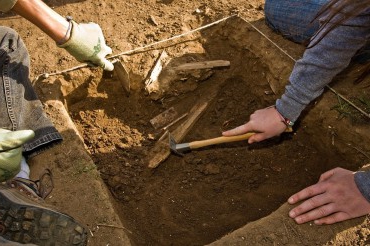
The "fate" of the attached objects after the end of the proceedings
In accordance with the general rules, the storage of material evidence is carried out until the verdict comes into force or the time limit for appealing the decision or court ruling on the termination of the case expires. The decision should determine the fate of the material evidence.
Regarding the instrument of crime, the decision (determination) should indicate the confiscation or destruction of the attached material. These decisions take place only when the object belongs to the offender by right of ownership. When using items owned by other persons who did not know about bad intentions, they can be returned to the owners.
In the case of a decision on confiscation, the decision should contain a list of objects falling under it. Materials prohibited for circulation must be transferred to the appropriate authorities or destroyed. The latter is carried out by a special commission body. If this is not possible, then the destruction is carried out by a special institution or enterprise. An appropriate act is drawn up about this event.
Weapons, cartridges, bullets, cartridges are sent to the police department, which can decide on their destruction, implementation, use as educational material or museum exhibits.
Money, property and other valuables that have been acquired by criminal means are returned to the rightful owner or are subject to appeal to the state income in the manner determined by the Government Decree. Money (foreign or Russian currency), securities issued on behalf of the Russian Federation, precious stones and metals are transferred to the Ministry of Finance.
Documents attached to the case as material evidence remain such throughout the entire period of its storage. The issue of their return is decided at the request of the person concerned, depending on the value and nature of the material.
Other objects are transferred to their owners within six months from the date of entry of the decision, determination, sentence into legal force. If the owners of the items are not identified, they become the property of the state. This category includes, but is not limited to, the values and property of which the assault was committed, with the exception of those that are retired.Arising disputes regarding the ownership of facilities are resolved in accordance with the rules of civil proceedings.
Objects appearing in the case as material evidence and subject to return to the owners by law are issued. In case of damage, loss, sale, the owner receives either similar objects or compensation, the size of which is equal to their value.
The decision regarding the further fate of the material evidence must be addressed immediately after the entry into force of the determination, decision or sentence or the expiration of their appeal. In the event that the objects are kept in special conditions, an extract from the sentence or a copy thereof shall be sent to the place of their location. The paper indicates further actions with these items. 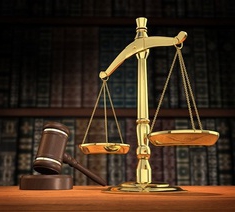
Finally
Judicial practice quite definitely requires the development of evidence-based theory, an adequate reflection of modern realities in the legislation, bringing the concept of “material evidence” into line with the existing information concept, and, quite likely, a complete rejection of this term in the interpretation adopted today. According to the current version of the Law, within the meaning of Article 81 of the Code of Criminal Procedure, the considered category is considered objective and subjective. The objective side is that all material evidence is part of the material world. They arise and exist regardless of the consciousness of the subject who studies them. The second side is that they reflect the signs and properties of objects in the minds of a knowledgeable specialist and their subsequent transformation into the form prescribed by law.








